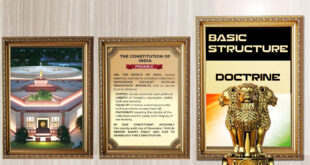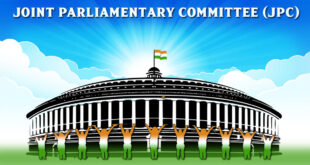It would be a travesty to waste the opportunities made possible by the Kartarpur corridor plan
Ties between India and Pakistan are at an ebb — their lowest in two decades. The thread from this phase, as a series of events — the Kargil war (1999), the Agra Summit (2001), the attack on Parliament (2001) and Operation Parakram (2001-02) — meant a sustained period of deep hostilities, with diplomatic missions downgraded and travel routes truncated. Since 2015 and Prime Minister Narendra Modi’s Lahore visit in the same year, the leaders of both countries have not met for talks. In mid-2018, the backchannel diplomacy between the National Security Advisers of both countries was called off by Pakistan, while in September 2018, India called off a planned meeting between the Foreign Ministers in New York. In the wake of the Pulwama terror attack in Jammu and Kashmir in February this year, India attacked terror targets in Pakistan which in turn sent fighter jets to the border. Subsequently, after India moved missiles and deployed submarines, Pakistan raised a full air alert and imposed an airspace ban that lasted till mid-July. The symbolism for pilgrims who will be able to travel from Dera Baba Nanak town in Punjab to the Gurdwara Darbar Sahib Kartarpur just a few kilometres inside Pakistan, which are sites where Guru Nanak spent his last few years, goes well beyond the date and year. This is a route that the Guru and his followers traversed with ease for half a millennium until Partition resulted in the India-Pakistan border cutting through it. While Sikh pilgrims have been given easy access since then to Guru Nanak’s birthplace at Nankana Sahib, the circuitous 200 km route to Kartarpur via Amritsar-Wagah has been off limits. The Kartarpur shrine has one of the last copies of the original Guru Granth Sahib; there are some who believe that it contains not only the wisdom of the 10 Gurus but is itself the 11th and last Guru. Giving life to the wishes of so many will also ensure political dividends in India, an aspect no government in the State or at the Centre can ignore. Agreeing to the Kartarpur corridor means the government has made an exception from a matter concerning national policy for a matter of faith. In the last few years, every avenue has been shut down from those for official, bilateral and regional (South Asian Association for Regional Cooperation) talks to even those for travel and tourism. Trade too has ground to a halt with cross-Line of Control (LoC) trade route suspension the latest casualty. With such strictures in place, New Delhi’s decision to embark on a course that will need regular and repeated India-Pakistan meetings is nothing short of a breach of its otherwise firm “no talks without terror ending” policy. For example, at a time when Indian and Pakistani Ministers do not even hold talks when they meet at multilateral conferences, New Delhi sent two senior Ministers to Pakistan to participate in the ground-breaking ceremony for the event. It remains to be seen who the government will send to the inauguration, and whether Mr. Modi, who has likened building the Kartarpur corridor to the fall of the Berlin wall, will grace the occasion. The timing of the Kartarpur opening may also lend itself to exploring other bilateral engagements. Ahead of the next plenary of the Financial Action Task Force (FATF) in October, Pakistan will remain under pressure to keep terror groups subdued. According to various reports, infiltration figures at the LoC are significantly lower (a 43% reduction since the Balakot strikes in February); officials have marked about 20 terror camps in PoK they believe have been “shut down” recently. Civilian and military casualties from ceasefire violations have also reduced. Pakistan Prime Minister Imran Khan’s government, which has been buoyed by Mr. Khan’s U.S. visit and by Pakistan’s new-found acceptance in the international community for its role in Taliban talks, and Mr. Modi’s government, which has been bolstered by its strong electoral mandate, will also be in the strongest positions politically to forge agreements. Thus, it would be a travesty to waste the opportunity made possible by the Kartarpur corridor, and by extension, the founder of the Sikh faith himself (revered by Hindus and Muslims in India and Pakistan) to bring both countries back to the table for talks. The most famous story at Kartarpur is the one of the ‘miracle’ that Guru Nanak wrought after his death as his Hindu and Muslim followers debated late into the night whether their Guru should be cremated or buried. When they awoke, his body had vanished, replaced by flowers which they divided up. The Guru Nanak’s ‘samadhi’ and grave were built side by side. As pilgrims across the border pay a visit in November, it should be clear what the bigger miracle is: that the Kartarpur exception has been made at all.
Check Also
Joint Parliamentary Committees (JPCs): Scrutinizing the Executive
Introduction In a parliamentary democracy, ensuring accountability of the executive is paramount. Joint Parliamentary Committees …
 Chinmaya IAS Academy – Current Affairs Chinmaya IAS Academy – Current Affairs
Chinmaya IAS Academy – Current Affairs Chinmaya IAS Academy – Current Affairs



